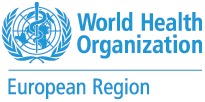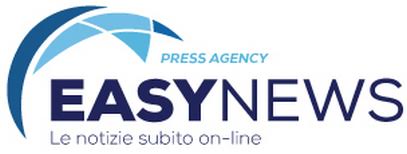
WHO/Europe launches toolkit for schools to create a tobacco- and nicotine-free environment
“Every time I pass by a smoking person, I hold my breath and try to move faster. I don’t like cigarette smoke. It’s bad for your health. I don’t know why they invented cigarettes. I wish they didn’t.”
“Oh, they invented cigarettes to make money. They profit from it.”
Amir and Insar, schoolchildren from Kazakhstan
Copenhagen, 26 September 2023
The WHO Regional Office for Europe is launching a new toolkit to provide practical advice to management and staff in schools on how to develop, communicate, educate on, and enforce effective nicotine- and tobacco-free policies in schools. Around 88% of adult smokers have their first cigarette before turning 18, and some start as early as age 11. While smoking continues to decline among European adolescents, the use of novel and emerging tobacco and nicotine products – including electronic cigarettes – is on the rise. These products are often marketed specifically at young people, who are an important target market for the tobacco industry. The WHO toolkit complements the global guide to creating nicotine- and tobacco-free schools (link below).
Dr Hans Henri P. Kluge, Regional Director for the WHO European Region states, “It is deeply concerning that the tobacco industry is still targeting young people and makes vast profits, harming their health. Schools must be safe spaces for young people, where they are free from exposure to, or pressure to use nicotine products. Creating a smoke- and nicotine-free environment in school settings is fundamental to helping prevent young people from starting smoking. If we don’t take urgent action now, we risk seeing the next generation of tobacco and nicotine users recruited through tobacco industries’ unethical practices.”
Toolkit recommendations
- Develop a nicotine- and tobacco-free school policy that is comprehensive so that it covers all students, all teaching and administrative staff, and all visitors.
- Provide preventive education and support for those who want to quit smoking.
- Co-create a communications plan that informs young people about all aspects of tobacco and nicotine use, from the harmful health effects of second-hand smoke to the tactics of the tobacco industry, and frame the question as an issue rather than a disciplinary matter.
- For optimal enforcement, include measures to address noncompliance and consistently monitor the effectiveness of the policy.
Reasons for tobacco and nicotine use in youth
Youth tobacco and nicotine use do not occur by chance; they are influenced by a complex interplay of factors, from industry activity, such as targeted advertising campaigns and marketing, to societal pressures. Understanding these drivers is critical to crafting effective prevention strategies.
Some of the key factors behind young individuals picking up their first e-cigarette or tobacco product are outlined here.
Weak enforcement of smoke-free laws. Even though smoking in educational facilities is prohibited in many countries, lax regulations and enforcement challenges can make tobacco and nicotine use more accessible for students.
Targeted marketing. Tobacco and e-cigarette companies target youth through their advertising campaigns, portraying their products as “stylish” or “cool”. The glamorization of tobacco and nicotine products still manages to overpower the hard-hitting messages and graphic images emphasizing their harm to people’s health.
Ineffective messaging to young people. Messages that blame the users themselves for taking up tobacco and nicotine use (especially among children), those that deliver complicated or multiple themes, compare risks, or unnecessarily use images related to tobacco products can be counterproductive. There is insufficient emphasis on the commercial determinant of this harmful habit – the pressure of the industry.
Reinforcing peer pressure. As the tobacco manufacturers succeed in portraying tobacco and nicotine use as a habit of successful role models, this image is unintentionally amplified by young individuals themselves. If children with greater peer authority start smoking, others may feel the need to fit in, mimicking their friends’ behaviours.
Redesigning and rebranding products. E-cigarettes are often promoted as “reduced risk”, “smoke-free” and “socially acceptable” consumer products. These branding strategies have the potential to re-normalize smoking and drive long-term use of addictive nicotine products by disguising them as a healthier alternative. These social positioning techniques, coupled with strategic marketing tactics, are particularly effective in targeting children and adolescents and have the potential to sustain nicotine addiction in youth.
Nicotine is highly addictive and is particularly harmful for young, developing brains. Adolescents are found to be more susceptible to nicotine addiction, which induces long-term neurological alterations, amplifying their risk of various disorders as they age.
Preventing tobacco and nicotine use in youth
Tobacco use immediately affects health and increases the risk of developing cardiovascular and respiratory diseases, diabetes, and over 20 types of cancers, including lung, bladder, larynx and oral, over the life-course.
Annually, tobacco claims over 8 million lives; a staggering 1.3 million of these deaths are non-smokers succumbing to illnesses attributed to second-hand smoke, and 51 000 of these victims are children. The main concern of tobacco use and exposure to second-hand smoke in youth is the harmful effects of nicotine on adolescents’ brain development.
In addition, children are more vulnerable to different forms of marketing and peer pressure and are easily influenced by their role models. This situation emphasizes the need for more effective and comprehensive measures to prevent children and young people from starting tobacco and nicotine use.
As children spend one third of their waking hours at school, it is imperative to offer them clean air and protect their information environment from the misleading and manipulative tactics of the tobacco industry.
WHO/Europe hopes that this toolkit will support educational institutions worldwide, providing them with the necessary tools and strategies to promote a healthier, tobacco- and nicotine-free environment for their students.
ENDS
Further reading:
Nicotine- and Tobacco-Free Schools Toolkit
Freedom from tobacco and nicotine: guide for schools
Summary results of the global youth tobacco survey in selected countries of the WHO European Region
Video: Launch of nicotine- and tobacco-free schools toolkit. Part 1
Video: Launch of nicotine- and tobacco-free schools toolkit. Part 2
For further information kindly email Tina Kiaer: kiaert@who.int
This information was brought to you by Cision http://news.cision.com
If you would rather not receive future communications from WHO Regional Office for Europe, please go to https://optout.ne.cision.com/en/WrrkASHzr9ND9pLGoZeWBZM2UwVq45A8ioBzLJqstxZfRYfoRtAo38NG4XepNJdvSvcxhVq86iNdjKNpbs614GY5CDa6TsbKM7LJbfkmNJvejeFPfRkSwqwnisedttbqY7e.
WHO Regional Office for Europe, Marmorvej 51, Copenhagen, 2100 Denmark



